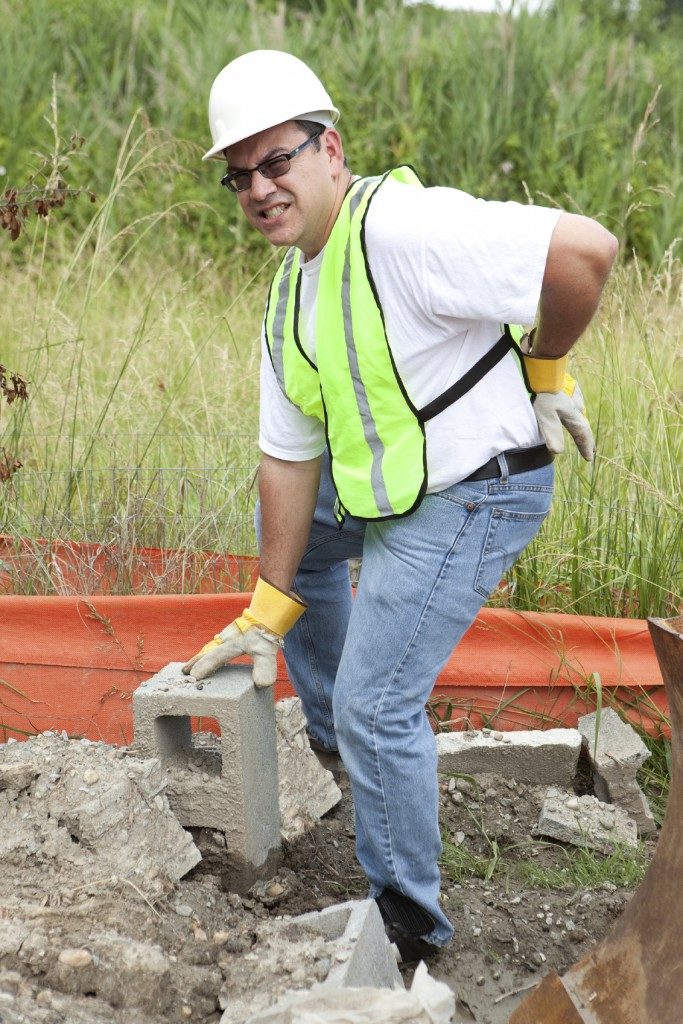HEAVE!!
“Go on, put your back into it” is a fairly common phrase, usually uttered as a form of encouragement when someone is struggling to lift a heavy object. But when you think about it, it’s a very strange thing to say, given that putting your back into it is precisely the wrong thing to do. It’s the kind of encouragement that could lead to some significant injuries, not least the commonly referred-to ‘slipped disc’.
Over the years, I’ve delivered many manual-handling training courses and, almost without fail, there is at least one delegate who has suffered a back injury. Most have no hesitation in emphasising just how painful and debilitating these injuries can be. I even had one delegate proudly show off X-rays of the repair (and I use that word intentionally) to his spine. There was no disc between two of the vertebrae in the lumber region of his back – just two spacers, the vertebrae being held together by a plate screwed in place. You see now why I call it a repair! It looked very ‘mechanical’. In fact, it reminded me of that well-known toy designed to turn us all into the next Isambard Kingdom Brunel (and if you don’t know what I’m talking about, I wish I was your age!)
Unfortunately, these injuries are all too common, especially in the construction industry, and it’s why the subject of musculoskeletal disorders, or MSDs, forms a significant part of Element 4 of the NEBOSH Construction Certificate. A quick look at the HSE website reveals that, according to the Labour Force Survey in 2011/12 there were an estimated 51,000 MSDs affecting the back, with the construction industry having one of the worst records.

The good news is that the incidence is coming down, as the estimated number of cases in 2001/02 was a whopping 95,000. The even better news is that there is no reason why this trend can’t continue. Health and safety professionals have been extolling the virtues of managing manual handling since…well at least 1 January 1993, when the Manual Handling Operations Regulations 1992 came into force, and no doubt well before that, too. The number and variety of devices designed to avoid, or at least minimise, the need for manual handling have proliferated alongside the increase in awareness of manual handling as an issue to be managed. There is now a huge array of mechanical devices on the market designed to handle many of the loads found on a construction site, including the worst offenders, such as kerb stones.
In fact, the technological improvements haven’t stopped there. I recall a promotion of a kerb stone made from recycled plastic, weighing only a fraction of a traditional kerb. Bingo! Two birds with one kerb stone (sorry, couldn’t resist) – reduced weight and manufactured from recycled material (remember that if you also happen to be studying for the Environmental Certificate).
So, when it comes to managing manual-handling activities on site, it’s vital to keep an eye on the latest developments, as new devices are coming on to the market all the time, some better than others. Not only do these devices reduce manual handling risk but they can also have other benefits, such as making a job a lot quicker. That alone could offset the purchase, or hire cost if your quantity surveyor tells you “there’s no money in the prelims for one of those”. Of course, these devices do introduce their own issues, and will come under the requirements of the Lifting Operations and Lifting Equipment Regulations 1998, also covered in Element 4, as well as the Provision and Use of Work Equipment Regulations 1998, covered in Element 5.
It is my humble opinion that it is the proliferation of mechanical aids that has contributed most to the reduction in injuries, and therefore can be the cause of continued reductions. I say this because in the 10 years or so I spent visiting construction sites, I rarely saw anyone handling loads using the correct lifting technique, despite many people having been trained to do so. But therein lies the story of another problem that affects the construction industry – behaviour.
So, although I started off by suggesting that “put your back into it” is a commonly-heard phrase, I must confess that I haven’t heard it said for a long time, which I hope is more, if somewhat anecdotal, evidence of increased awareness of the problem, even if not everyone does it right yet!
Rodger Hope CMIOSH, IIRSM

Rodger has been involved in health and safety for over 15 years and has been particularly involved in construction health and safety for over 10 years. He really enjoys tutoring because of the opportunity it provides to influence peoples’ attitude towards health and safety. In his spare time Rodger enjoys sailing and boat maintenance.
